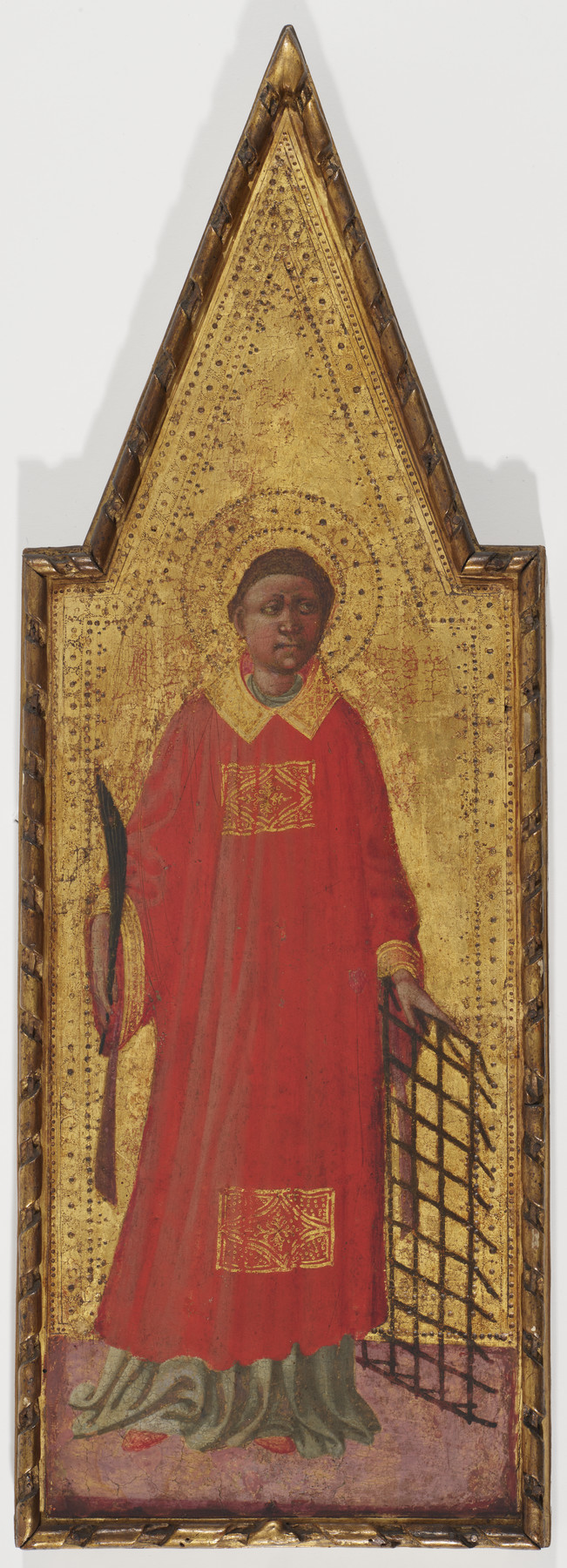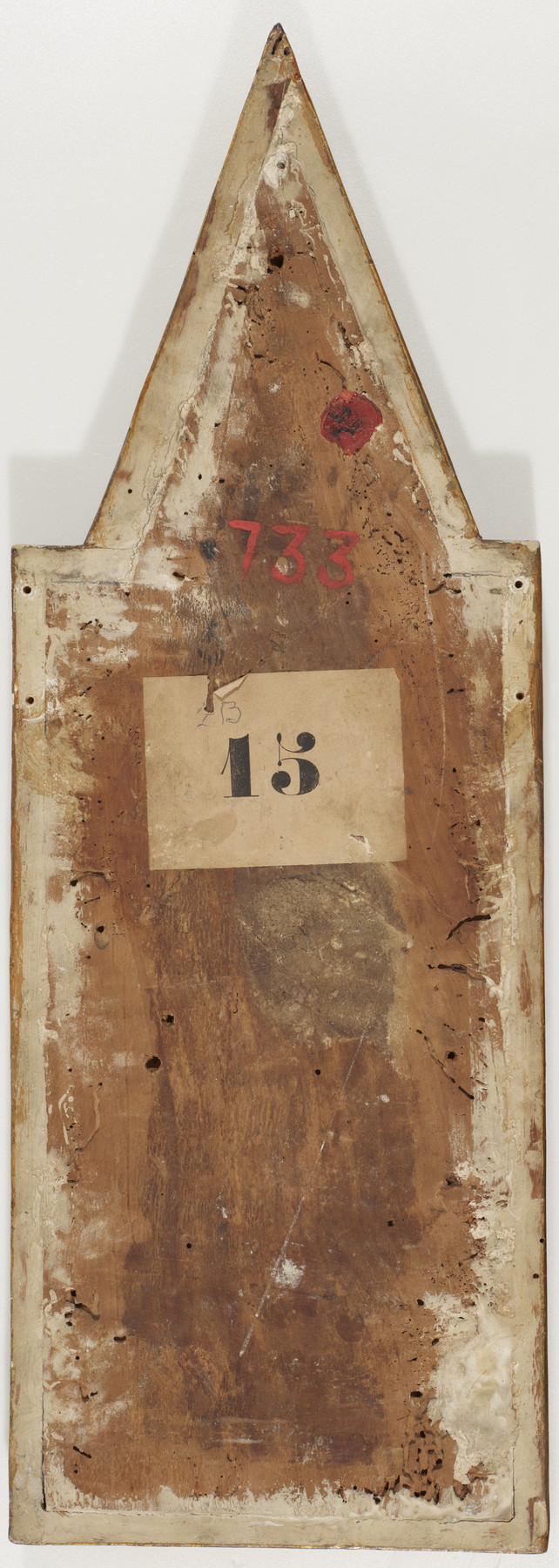St. Lawrence
(Renaissance Europe )
The early Christian martyr Saint Lawrence (225-258 CE) stands with his typical attributes: a palm frond, indicating his status as a martyr, and the gridiron on which he is said to have been killed. The panel was once part of a small "polyptych," or multi-paneled altarpiece, which probably depicted the Madonna and Child flanked by several saints. Two similarly shaped panels depicting Saints Benedict and John the Baptist, both now in private collections, are believed to have come from the same complex. The ensemble was attributed by art historian Federico Zeri to Battista di Gerio, who worked in the Tuscan cities of Pisa and Lucca in the early 15th century. Recent research, however, has shown that many of the paintings formerly believed to be by Battista di Gerio are actually by Borghese di Piero, another artist active in the same two cities.
Provenance
Provenance (from the French provenir, 'to come from/forth') is the chronology of the ownership, custody, or location of a historical object. Learn more about provenance at the Walters.
Don Marcello Massarenti Collection, Rome [date and mode of acquisition unknown] [1881 catalogue: no. 22; 1897 catalogue: no. 15, as Cimino di Andrea Cimini]; Henry Walters, Baltimore, 1902, by purchase; Walters Art Museum, 1931, by bequest.
Geographies
Italy, Tuscany, Lucca (Place of Origin)
Measurements
Painted surface and panel H excluding modern gilt frame: 21 1/8 x W: 7 x D: 1 3/16 in. (53.6 x 17.8 x 3 cm)
Credit Line
Acquired by Henry Walters with the Massarenti Collection, 1902
Location in Museum
Not on view
Accession Number
In libraries, galleries, museums, and archives, an accession number is a unique identifier assigned to each object in the collection.
In libraries, galleries, museums, and archives, an accession number is a unique identifier assigned to each object in the collection.
37.733






